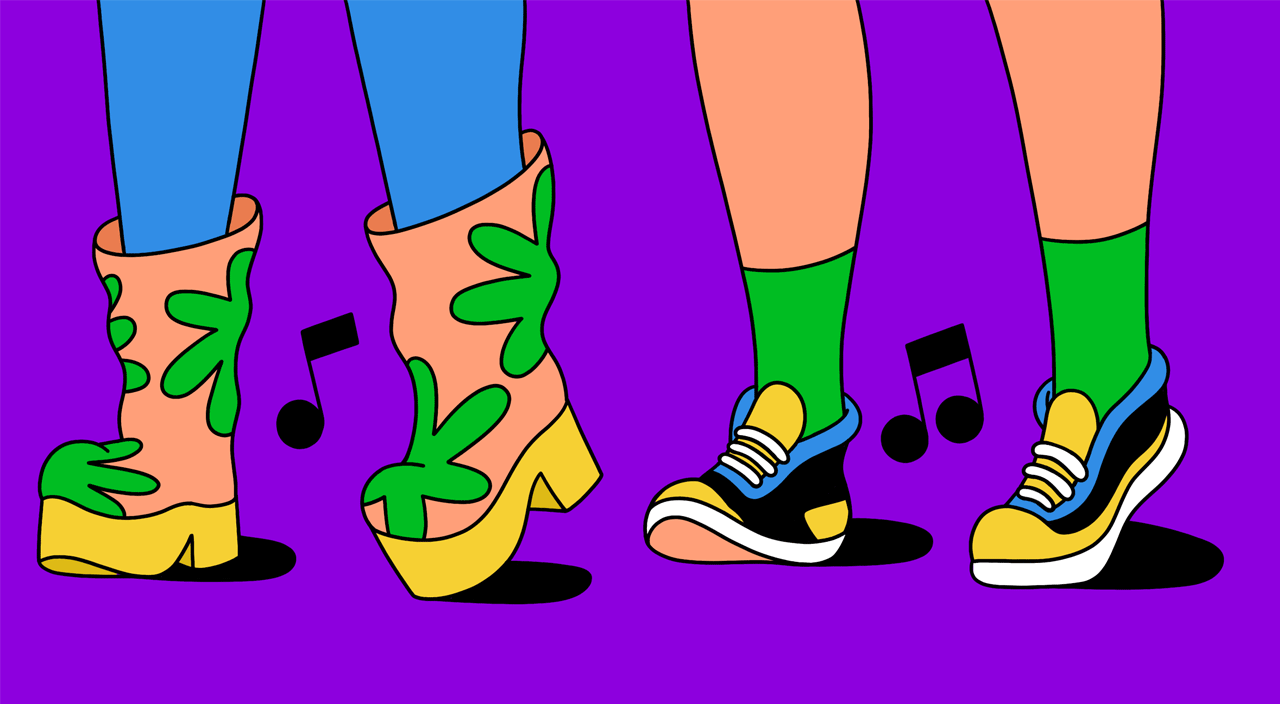My musical education began in the 1950s with my brother Jay. He was 10 years older and I revered whatever he loved. He introduced me to music from the silly (“Flyin’ Purple People Eater”) to the melodic (“The Lion Sleeps Tonight”).
I ridiculed my parents’ musical tastes. “I love Russ Columbo!” my mother would croon with more than a tinge of lust, craving more than his baritone voice. “Who?” I responded, unconvinced music preceded Elvis. Why would I be interested in anyone born in 1908? But my mother swayed to his most famous tune, “You Call It Madness, But I Call It Love.” Columbo was known as the Valentino of radio.
Years later, when I married, I debated my father-in-law’s claim, “There hasn’t been a decent musical written since My Fair Lady.”
What about West Side Story, a year later? Hair? Rent? Hamilton?
Must every generation make claim to their own musical devotion? Back in college, my friends and I vowed to never turn into clueless codgers, who believed the Stones were an evil influence. We would never fall into the trap of not knowing musical icons of the day.
I shocked my mother by curating a playlist of Beatles songs to accompany me walking down the aisle. She argued that the only music suitable for my wedding was “Sunrise, Sunset.” I forbade the bandleader from playing it, but he listened to my mother rather than the bride.
When my daughter was born, I wanted to introduce her to the soundtrack of my life. I foolishly believed I had superpower influence over her tastes and path in life. Determined not to live in the house of endless “Wheels on the Bus,” I brought my daughter to outdoor music festivals. She was more interested in climbing trees, but I hoped snippets of Mozart’s concertos would sink into her formative brain.
I took her to Broadway shows as soon as she could sit still, pleased that she was falling in love with show tunes. In fifth grade, after seeing “The 25th Annual Putnam County Spelling Bee,” she broke into a loud rendition on a busy street about an unfortoo-nate erection, echoing the song that had been delivered humorously by Will Roland. I smiled at passersby, delivering my best I’m-not-a-creepy-mom look.
There were sharps and flats along the way. While driving home from a soccer game with three sleeping girls in smelly socks in the back seat, my husband snapped “Desolation Row” into the CD player, eleven minutes long! Our daughter woke up, horrified, hating the song that never ends. For years she joked that this was the most traumatic event in her young life.
She claimed Dylan and Neil Young were the same person: old guys with squeaky voices and boring lyrics. In the Venn diagram of our family’s musical tastes, raspy folkies were on one outer circle, Top 40 on hers (Beyoncé, Rihanna, Taylor Swift), but our family could still enjoy a shrinking middle ground of music.
Mixing cookie dough on cold winter nights, we harmonized to Sondheim. Meanwhile, her friends’ parents repeated my own parents’ mantra: “Turn that awful music down!” Except for the everlasting Beatles. Even though they broke up 50 years ago, in the past two years their music has been streamed 1.7 billion times—nearly 50 percent of it by people ages 18 to 29. Springsteen, however, doesn’t cross generational lines. “Taylor Swift is the millennial Bruce Springsteen,” claims Emily VanDerWerff in Vox.
As if preordained, I began to lack familiarity for artists my daughter bounced to in college. Lady Gaga was so over the top and avant-garde in appearance, I didn’t see through to her talent. It’s an homage to my mother that I gained admiration for Gaga when she collaborated with Tony Bennett.
On one long vacation car trip, my daughter initiated a game in which she, my husband and I would each take turns choosing a song, and she’d play each selection on iTunes. It was a family turning point, where we were all introduced to new music. I liked her selection of female folky sister bands serenading us, like First Aid Kit and Haim. I was surprised when she picked Joni Mitchell, my favorite folkie she’d yawned at before. We both sang along to “Both Sides Now,” an apt song for our merging musical preferences.
My daughter’s influence was never stronger than during the pandemic. I’d lost the use of my pool, where I swam laps. Averse to power walking, I needed inspiration to get me moving and keep me moving.
“Go onto GRL FKN PWR,” she advised me on FaceTime from her own apartment. It was a dance cardio workout on Spotify created by 305 Fitness. I was dubious, but this playlist was AWSM. Who knew I’d be strutting to Little Mix and Demi Lovatto? Burning calories on the street, I was Christina Aguilera’s “Fighter” and Ariana Grande’s “Dangerous Woman.”
My daughter still refuses to listen to Dylan, in spite of his Nobel Prize. But we both dance together belting out every word of Hamilton.
Recently we were doing a jigsaw puzzle. She clicked Spotify, saying, “I’ve become more mellow.” She introduced me to Jensen McRae, an L.A. folk-alternative-pop songwriter who explores political and racial themes in a bluesy voice. Born the same year as my daughter, McRae cites James Taylor, Carole King and Stevie Wonder as her influences. The music of my generation! I’m back in time, strumming my guitar with my college roommates.
My daughter makes me a playlist. I embrace Phoebe Bridgers and Samia. The middle ground of our tuneful tastes has enlarged. I take pleasure in new lyrics and ideas, feeling more connected to her generation rather than stuck in my own. “Ob-la-di, ob-la-da,” the Beatles knew that life went on. And so does the music.

Elena Xausa


